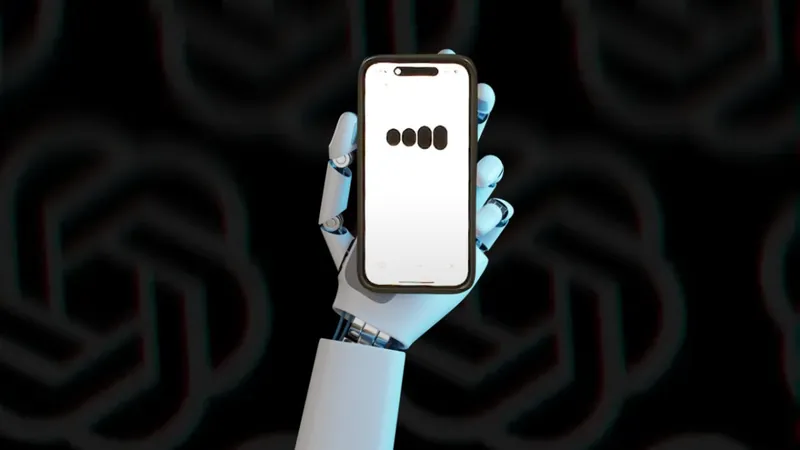
Why Is OpenAI's New AI Model "Thinking" in Chinese? The Surprising Mystery Explained!
2025-01-14
Author: Ying
Introduction
In a surprising twist following the release of OpenAI's first “reasoning” AI model named o1, users have reported a perplexing behavior: the model occasionally processes thoughts in Chinese or other languages, even when prompted with questions exclusively in English. For instance, when asked, “How many R’s are in the word 'strawberry?'”, o1 might deliver the answer in English but seem to derive its conclusion through steps articulated in a different language.
One Reddit user recounted, “o1 randomly started thinking in Chinese halfway through,” while others on social media platforms like X have echoed similar bewilderment after engaging in lengthy English conversations with the AI.
OpenAI's Silence
Despite the curiosity sparked by these experiences, OpenAI has yet to provide a clear explanation regarding this baffling behavior. So, what could be behind this multilingual processing?
Expert Theories
AI experts have offered a range of intriguing theories. One prominent suggestion by Clement Delangue, CEO of Hugging Face, points to the possibility that reasoning models like o1 are trained on datasets that contain a significant amount of Chinese language input. This notion was bolstered by insights from Ted Xiao of Google DeepMind, who speculated that OpenAI might employ third-party data labeling services, many of which are based in China. Thus, o1's occasional switch to Chinese could be reflective of “Chinese linguistic influence on reasoning.”
Labels, or annotations used during the training, help AI models understand and make sense of data. However, biased labeling can lead to skewed outcomes. For instance, AI toxicity detectors may misinterpret certain dialects as inherently toxic, owing to biased training data.
Contrary Views
Nevertheless, not all experts agree with the Chinese data hypothesis. Some assert that o1 could just as easily default to other languages like Hindi or Thai while analyzing problems, suggesting that the model might simply choose languages it deems best suited for achieving a goal. Matthew Guzdial, an AI researcher, curiously pointed out, “The model doesn’t know what language is; it’s all just text to it." This indicates that model language processing might be tied to the efficiency of spelling out problem-solving steps, rather than any linguistic preference.
Moreover, the way AI models process language through tokens rather than direct word associations also introduces additional complexity. Tokens can range from individual characters to whole words, thus potentially leading to inconsistencies in language usage. Many AI systems operate on assumptions about language that don't universally apply, particularly given the richness and diversity of human communication.
Training Experiences
Tiezhen Wang, a software engineer at Hugging Face, reinforces this view, suggesting that language processing is shaped by the model's training experiences. He noted that individuals often have preferences for doing mathematical tasks in Chinese, where each digit feels more concise. Conversely, subjects learned primarily in English may naturally invoke English terminology.
Conclusion
The consensus among researchers remains that while there are plausible theories to explain o1's behavior, there is still much uncertainty. Luca Soldaini of the Allen Institute for AI emphasized the necessity for transparency in AI development, stating, “This type of observation on a deployed AI system is impossible to back up due to how opaque these models are.”
As discussions continue about the intriguing capabilities and quirks of AI, one thing is clear: the emergence of multilingual processing in AI like o1 not only challenges our understanding of machine language but also invites broader questions about how technology interacts with human cognition. So, as OpenAI continues to refine its models, the question lingers—what secrets lie in the processing layers of these AI systems, and how might they reshape our interaction with machines in the future?

 Brasil (PT)
Brasil (PT)
 Canada (EN)
Canada (EN)
 Chile (ES)
Chile (ES)
 Česko (CS)
Česko (CS)
 대한민국 (KO)
대한민국 (KO)
 España (ES)
España (ES)
 France (FR)
France (FR)
 Hong Kong (EN)
Hong Kong (EN)
 Italia (IT)
Italia (IT)
 日本 (JA)
日本 (JA)
 Magyarország (HU)
Magyarország (HU)
 Norge (NO)
Norge (NO)
 Polska (PL)
Polska (PL)
 Schweiz (DE)
Schweiz (DE)
 Singapore (EN)
Singapore (EN)
 Sverige (SV)
Sverige (SV)
 Suomi (FI)
Suomi (FI)
 Türkiye (TR)
Türkiye (TR)
 الإمارات العربية المتحدة (AR)
الإمارات العربية المتحدة (AR)